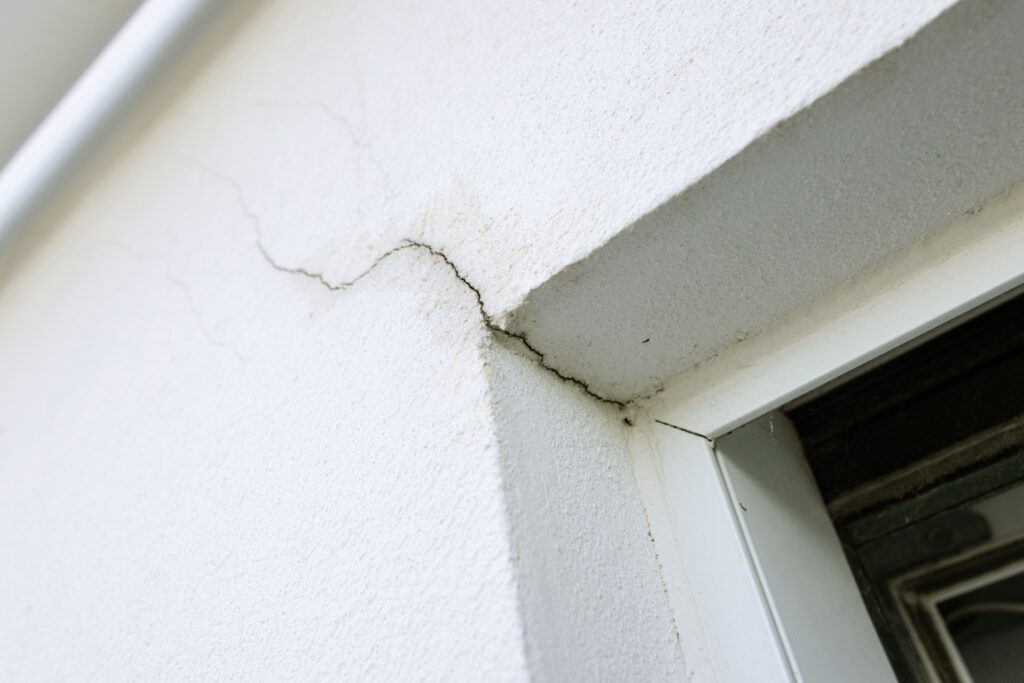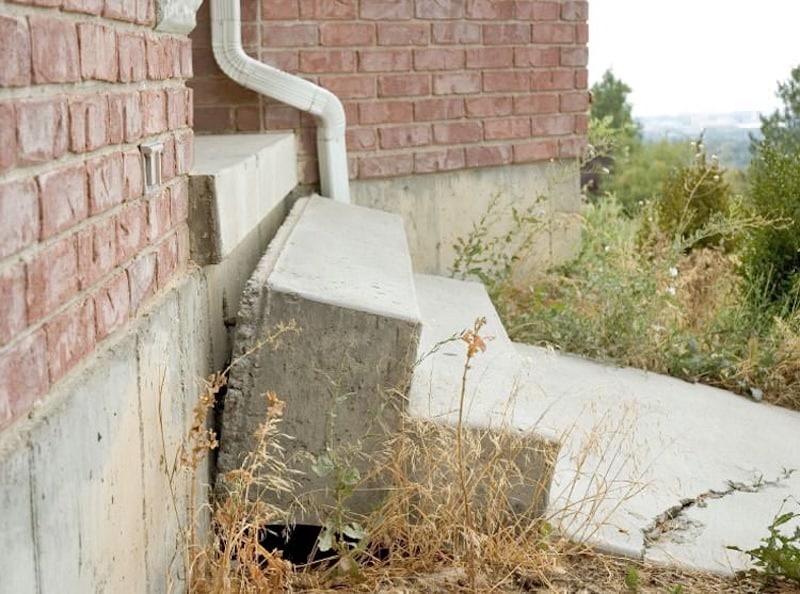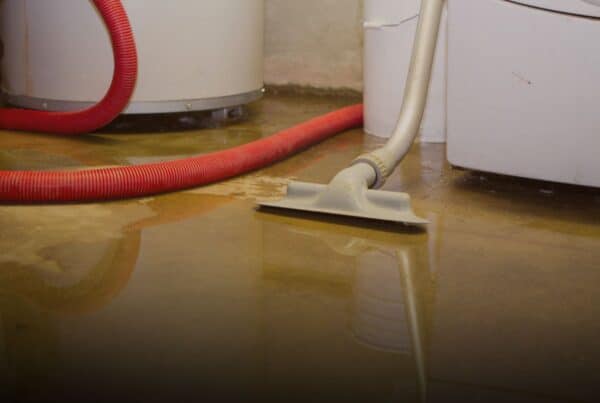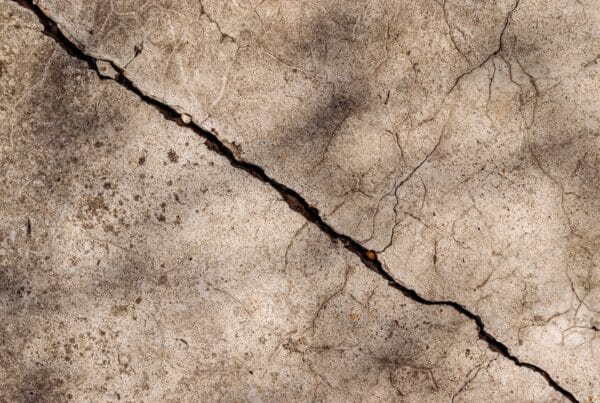A solid foundation is what keeps your home safe, level, and standing strong. But when that foundation starts to sink, the problems can add up fast. If you’ve noticed cracks in your walls or your floors aren’t as even as they used to be, your home might be trying to tell you something. In this post, we’ll break down what causes a sinking foundation, the risks of leaving it untreated, and the best options for fixing it.
We’ll also share when it’s time to bring in a professional, and what to expect when you do.
How to Tell if a Foundation Is Sinking
Your house probably won’t shout, “Hey! I’m sinking!” But it will show some signs. Keep an eye out for these:
- Cracks in the walls, especially around doors and windows
- Uneven or sloping floors
- Doors and windows that stick or won’t close properly
- Gaps between walls and ceilings
- Cracked or sinking exterior steps
One or two small cracks might be normal. But if you’re noticing a pattern or things seem to be getting worse, it could mean your foundation is shifting and sinking.

Cracks around windows and doors suggest a sinking, or otherwise struggling, foundation
Why Foundations Sink in the First Place
So what’s behind a sinking foundation? In Ohio, there are a few common causes:
- Shifting Soil: The type of soil under your home plays a big role. Clay soil, which is common in many parts of Ohio, expands when wet and shrinks when dry. Over time, that movement can cause your foundation to settle unevenly.
- Poor Drainage: Too much water pooling near your home can wash soil away, weakening the ground beneath your foundation.
- Freeze and Thaw Cycles: During the winter, the ground freezes and expands. When it thaws, the soil shifts again. That back-and-forth movement can cause the foundation to shift and sink over time.
- Construction or Landscaping Mistakes: If the soil wasn’t properly compacted when your home was built—or if large trees are planted too close to the house—the root systems or loose ground can lead to trouble later.
What Can Happen if You Ignore It
A sinking foundation isn’t something that gets better on its own. If you ignore it, things can get worse—and more expensive.
- More Damage Over Time: Small cracks turn into big ones. Doors stop working right. Floors start to slope. Your whole house can become unstable.
- Water Problems: A sinking foundation can cause gaps where water sneaks in. That means wet basements, mold, and long-term moisture damage.
- Lower Home Value: If you plan to sell your house, foundation issues can scare off buyers or reduce your home’s value.
- Costly Repairs Later: The longer you wait, the more the damage spreads. What might have been a simple repair can turn into a major project with a bigger price tag.

Advanced structural damage; sinking concrete slab foundation
Repair Options for a Sinking Foundation
The good news is that a sinking foundation can often be halted and fixed. Here are a few repair options we use at Buckeye Basement Solutions, depending on the problem and your home’s needs:
- Helical Piers: These are steel rods that are screwed into stable soil below your home. They support and lift the foundation, preventing further sinking. Helical piers are great for lighter structures or where the soil isn’t too deep.
- Push Piers: These are driven deep into the ground until they reach solid bedrock or stable soil. Then, they’re used to lift and support your foundation. Push piers are best for heavier homes and offer strong, long-term support.
- Slabjacking (or Mudjacking): If your foundation is a concrete slab, this method involves pumping a special grout mixture underneath it to raise it back to level. It’s a less invasive option for certain situations.
Every home is different. We look at the soil type, structure, and extent of damage before recommending a solution.
What to Expect
Worried that foundation work means your house will be torn apart? Don’t be. Most repairs are less invasive than people think.
Here’s what usually happens:
- We inspect the problem and determine the right solution
- Our team explains the repair process and answers all your questions
- Work begins—usually outside your home, with minimal disruption
- Repairs are done in days, not weeks
- We clean up and leave your property better than we found it
Costs depend on the method used and how far the damage has progressed. But remember, early fixes are almost always cheaper than waiting.
Recommended Maintenance
Want to help prevent future foundation problems? A few simple steps can make a big difference:
- Keep gutters clean and water draining away from your foundation
- Avoid planting large trees too close to your house
- Check for and fix plumbing leaks quickly
- Watch for signs of soil erosion around your home
- Schedule regular foundation inspections, especially if your home is older
Small actions now can help avoid big headaches later.
When to Call a Professional
If you’re seeing cracks, uneven floors, or other signs we mentioned, it’s time to talk to an expert. Foundation issues don’t fix themselves, and DIY repairs often don’t last.
At Buckeye Basement Solutions, we know Ohio soil. Our team has seen just about every kind of foundation problem you can imagine, and we know how to fix them right the first time.
Not sure if your home has a serious issue? That’s okay. We’ll take a look, explain what’s going on, and help you decide what to do next—no pressure.
Final Thoughts
A sinking foundation might sound scary, but it doesn’t have to be. The key is to catch it early, understand your options, and work with a team you can trust.
At Buckeye Basement Solutions, we’re here to help homeowners across Ohio protect their homes from the ground up. If you’ve noticed signs of a sinking foundation, or just want a second opinion, schedule a foundation evaluation with our team today.



